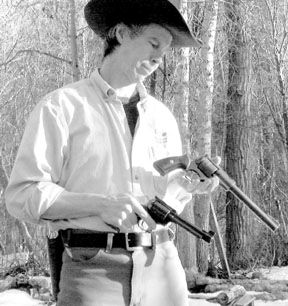
For 2001, Sturm, Ruger & Co. has introduced its new proprietary .480 Ruger handgun round in the firm’s double-action Super Redhawk revolver, available with 7.5- or 9.5-inch barrels. Recent testing we performed on the gun head to head against two other monster revolver rounds, the .475 Linebaugh and the .500 Linebaugh, call the company’s introduction of the round into question. Though we are well aware of Ruger’s proven ability to make and market world-beating firearms when everyone else thinks they’re nuts (the No. 1 single shot and the 10-22 rimfire rifles come to mind), we can only say we were underwhelmed with the .480 Ruger. Here’s why.
Short Supplies
We acquired a Ruger .480 Super Redhawk with 9.5-inch barrel. Hornady, at the time the only maker of ammunition for the new cartridge, told us they had no ammunition on hand to sell us. That problem has been rectified, and ammo supplies from Hornady should be forthcoming by the time you read this. We acquired ammunition for the Ruger from a distributor who apparently had more pull with Hornady than we did.
To test against the new Ruger, we borrowed a .475 Linebaugh revolver made by Hamilton Bowen, and a .500 Linebaugh made by John Linebaugh. These two were made on Ruger’s Bisley frame. Both had 5.5-inch barrels. We shot all three revolvers with heavy and light loads. The biggest benefit of these huge handguns is their immense versatility, and that factor has apparently been overlooked by Ruger, based on the configuration of the new handgun. The new, big, Super Redhawk is somewhat limited in its possible uses. It’s way too big to pack, and appears to be designed solely for hunting. More on that later.
A bit of history is necessary to see the full picture of these powerful cartridges. Our report on the .475 Linebaugh Freedom Arms revolver (April 1999) gave details of the development of the .475 and .500 Linebaugh cartridges by John Linebaugh. He doesn’t take full credit for the .500, but the .475 is his alone. Linebaugh was the main force behind the popularization of both of these monster cartridges as wildcats over the past decade or so. But it was the work of Tim Sundles, headman of Buffalo Bore Ammunition Co., that led Freedom Arms to bring out their superb revolvers chambered for the .475 Linebaugh, and that made the whole monster-cartridge concept legitimate.
Sundles started a company called Buffalo Bore Ammunition [(208) 756-8085] to produce both .475 and .500 Linebaugh cartridges, and a few others. Sundles got the Starline Co. to produce .475 and .500 brass, having to order cases by the carload to get Starline to accept the job. He made one slight modification to the .475 Linebaugh brass, reducing the rim diameter from the parent .45-70 of John Linebaugh’s invention so that the new brass would work in Freedom Arms’ fine revolvers. Freedom then began chambering their superb revolvers for the .475 Linebaugh. Although the Freedom’s grip is not as user-friendly as it could be for this level of power, the guns are extremely well made, and shooters now have good revolvers available for an extremely powerful cartridge. More to the point, the .475 Linebaugh has become a standard, factory-loaded, SAAMI-defined cartridge.
Hornady then began producing ammunition for the .475 Linebaugh. Unfortunately for them, Buffalo Bore has exclusive rights to the use of Linebaugh’s name on the brass headstamp. We have seen copies of the paperwork that granted that exclusive right to Buffalo Bore Ammunition. Therefore, Hornady, as we understand it, cannot continue to manufacture ammunition for the .475 Linebaugh.
We also know that many, many gun writers and knowledgeable shooters have urged Ruger to bring out five-shot revolvers on their Bisley frame chambered for both the .475 and .500 Linebaugh cartridges. Why the Bisley frame? Because Linebaugh, in conjunction with at least one well-known gun writer, determined by actual tests that the Ruger Bisley grip frame is the only handgun grip that permits an experienced shooter to control the massive recoil of these ultra-powerful cartridges. Even with the Ruger Bisley grip, their recoil is daunting. If Ruger did bring out a five-shot Bisley, we assume its cost would be much higher than for the ordinary six-shot gun because of additional fitting and other factors.
Our report on the .475 Linebaugh by Freedom Arms contained test information on its grip shape that was omitted, due to space limitations. We taped up the Freedom grip to closely match the Ruger Bisley grip shape. This was an improvement, but was not enough to compensate for an inappropriate grip design by Freedom Arms, which includes a hand-banging boss at the top of the grip that is not present on the Ruger Bisley. We fired the taped-up .475 Freedom next to a gun of the same weight and caliber built on a Ruger Bisley. The Freedom was too uncomfortable for repeated shooting, but our shooters kept on firing the Bisley-gripped gun with the same hot loads in relative comfort. This is something that apparently neither Ruger nor Freedom Arms has realized. Grip shape is critical to being able to handle all this horsepower. That is why experienced handgunners want Ruger to bring out the two monster cartridges in the Ruger Bisley, and in no other configuration. In our view, it’s a shame that the round is mis-chambered for the Super Redhawk.
.480 Ruger Super Redhawk, $745
In introducing this gun, we’re guessing that Ruger was vitally interested in the .475 Linebaugh idea, but wanted to have a cartridge that could be loaded by Hornady or any other ammunition company, yet would still compete with the .475 Linebaugh for power. Therefore, they brought out a cartridge that is essentially a .475 Linebaugh Special and gave it a new name. The new Ruger cartridge has a slightly shorter case and significantly less power than the .475 Linebaugh. In a way, this makes sense because very few ever need the full power of the .475.
[PDFCAP(1)]However, we suspect “need” has little to do with the sale of these big guns. The folks at Ruger apparently figured the real reason for these big guns was for hunting, hence the easily-scoped, long-barreled configuration of their new product. They may have made a mistake. We guess that for every hunter who wants one, there will be at least three shooters who want a huge-caliber, very powerful but compact handgun that’s easy to pack. These folks may be Alaskan bush wanderers, bear guides, or just experienced handgunners who want something different than the common .44 Mag —and a lot more powerful. These folks also believe that handgun power is defined by heavy bullets, not light ones at high velocity.
We doubt these woods wanderers will buy the .480 Ruger in its present configuration because it’s too bulky to pack, in our view. Reducing barrel length might help, but there’s still that shoulder on the back strap of the Super Redhawk that ensures the full force of recoil goes into the hand and wrist, and up the arm to the elbow. That’s not a good thing. The shorter the barrel, the more the recoil and the greater the pain.
On viewing the .480 Ruger for the first time, one of our test shooters said, “Where are the wheels for that cannon?” The big Ruger is a large and clumsy brute. It came with scope mounts, but shooters with experience with these heavy-kicking handguns seldom scope them. Why not? First, recoil is so heavy that not every scope can withstand the force, and we confess we don’t know which ones can. The weight of the Ruger and its less-than-monster recoil would help it work with a great many good scopes, though. We’ve already mentioned the desire of many folks for portable power, and a scope doesn’t spell carrying ease.
Next, handgun hunting is hunting to the Nth degree. That is, it’s the realm of the hunter who wants the challenge of getting as close to the game as possible. It doesn’t matter if you can hit the vitals of a deer at 100 yards. What does matter is: Can you get within 20 yards? That’s the real test of the handgun hunter. At close range, you don’t need a scope. Too many overlook this simple but vital point. Some “handgun” hunters use single-shot firearms with short barrels and scopes, but these are just short rifles that are difficult to hold steady. Like the new Ruger, they’re not easy to carry, and don’t impose the need of getting as close to the game as possible.
The Gun
The new Ruger was well made, like most Ruger products. The finish was Ruger’s proprietary gray, now applied to most of the firm’s stainless products. The iron sights were fully adjustable, and gave an excellent sight picture. The rear notch was outlined in white, and the replaceable front blade had a red insert. The grip material was rubber with dark gray synthetic inserts. The handgun was very muzzle heavy. All the weight of that 9.5-inch barrel up front helped hold the gun steady as long as we were able to hold it at arm’s length, which was not all that long. The weight, unloaded and unscoped, was 55.4 ounces, which is just a tad under 3.5 pounds. The .500 Linebaugh, by comparison, weighed 47 ounces.
Fit and finish were very good. The six chambers were well polished inside. Metal thickness between the chambers was alarmingly small, in our estimation. We measured it at 0.039 inch. Compare that to the 0.094 inch of the five-shot .500 Linebaugh and even thicker webs on the .475 Linebaugh, and you’ll realize our concern. The cylinder was long enough to be rechambered to accept the full-length, full-power .475 Linebaugh cartridge. Could it be that Ruger had originally planned to bring out the gun as a .475 Linebaugh? We don’t know. Does the cylinder have enough strength for the full-power .475 Linebaugh? Again we don’t know. We’ve already heard reports that folks are lengthening the Ruger’s chambers to accept the full .475 Linebaugh, but don’t know anything about the success of these projects. We suspect it’s a very bad idea.
The Ruger had fine accuracy. Before the factory ammo arrived we shortened some .475 Linebaugh brass on a lathe and loaded up some light loads using the excellent Hawk Precision Bullet Company’s [(856) 299-2800] 300-grain flat-nose jacketed bullets. Hawk has a grand assortment of bullets in different weights and configurations for just about all calibers. We loaded their bullet over 5.0 grains of Alliant’s Bullseye powder, with normal CCI 300 primers. This was a pleasantly light load, and was about as accurate as the Hornady full-bore loads proved to be when they arrived. Velocity of our lightest load was just under 600 fps. We also tried 8.0 grains of Universal Clays with the same bullet, and got groups just over 2 inches.
Felt recoil was severe but manageable for experienced shooters. The weight of this big revolver helped tame the kick, and the extra weight of a scope would help still more. Our best five-shot group measured 1.2 inches with Hornady’s loads. Our best with our lightest load was 1.8 inches, all fired at 25 yards with iron sights. Several of our groups had four shots touching, with the fifth a short distance away. The trigger pull didn’t help, it being 5.2 pounds. The Super Redhawk’s hammer had a low spur for easy cocking with a scope mounted.
The double-action pull was smooth, and weighed a bit over 12 pounds, but we can’t conceive of a need for shooting the big gun double action under any circumstances.
The ballistics of the .480 Ruger are advertised as a 325-grain bullet running at 1,350 fps. Our Oehler 35P chronograph told us they were going right at 1,400 fps out of that long barrel. The .475 Linebaugh gave a 420-grain lead flat-nose bullet a velocity of 1,330 fps. With a 350-grainer the .475 Linebaugh got over 1,500 fps. These larger numbers define the realm of monster-handgun horsepower, and they leave the new Ruger behind. Our test .500 Linebaugh gave a 440-grain bullet—one full ounce of lead—over 1,200 fps with its 5.5-inch barrel. In fact, Buffalo Bore’s “Heavy” .45 LC loads gave a 325-grain bullet nearly 1,300 fps out of a 5.5-inch-barrel Bisley Vaquero. With a 7.5-inch barrel, performance of the .45 LC would come close to matching that of the new Ruger, in our opinion.
[PDFCAP(2)]All of this leads us to believe that Ruger’s new cartridge is something of a mistake. You can get just about the same performance out of a Ruger Bisley chambered for .45 Long Colt, and it’ll cost you $300 less than the .480. The Bisley .45 LC comes with adjustable sights and a 7.5-inch barrel and lists for $450. With the Bisley, you get a grip shape that will let you get the most out of the gun, though it won’t be as easy to scope, if you need to do that.
.475 Linebaugh Bowen, $2,095 plus gun
This was a beautifully made revolver, though not any nicer than the .500 Linebaugh built by John Linebaugh. Right off the bat we’ll tell you we could not see any significant quality difference between the Bowen Classic Arms and Linebaugh guns. Linebaugh and Bowen make guns in both these calibers, and quite a few more, for that matter. Both our test guns were exceptionally tight and perfectly timed, both had identical 3.0-pound triggers, and both had cylinders that rotated freely when the loading gate was opened. Both had Bowen’s all-steel adjustable rear sight (the .480 Ruger had an aluminum base on its rear sight), and both gave outstanding accuracy. Both were well polished, with all the surfaces of the steel frames stoned to flatness throughout. Both had barrel-band front sight mounts machin-ed into their barrels, both had steel ejector rod housings put on to stay, and both had outstanding bluing. Each of these revolvers had their base pins positively secured by means of a bolt passing vertically through the front extension of the base pin into the bottom of the barrel.
[PDFCAP(3)]The owner of the Bowen .475 Linebaugh had put on a set of grips made from what appeared to be horn, and they added to the weight (and don’t figure into the listed cost). They were also wider, and the gun was slightly heavier than the .500 Linebaugh, which made this handgun a bit easier on the hand than the .500 with full loads. (Full loads for the .475 and .500 have about the same real power on the biggest game.) Fit and finish were superb. The trigger was clean at 3.0 pounds. The free-rotating cylinder made loading and unloading of this design very much easier than when it left the Ruger factory.
The front sight was a square-backed post pinned to a long ramp that was bolted to the barrel. Though this handgun had been fired many, many times with full .475 Linebaugh loads, lockup was still very tight. The left side of the barrel carried the designation, “.475 MAGNUM CAL.” This handgun was made before the .475 Linebaugh became legit, and Bowen apparently felt he didn’t need to advertise his main competitor by putting the Linebaugh name on the gun. Beneath that was the company name, “BOWEN CLASSIC ARMS CORP.”
The .475 was very well balanced. The grip was hand-filling, noticeably larger than that of the .500. On the range, the full loads gave a sting to the hand, but the gun was totally controllable. We tried it with the .480 Ruger loads, and it was very mild-mannered. We tried Buffalo Bore’s light loads, which gave a 420-grain bullet about 950 fps and put five into less than an inch shooting from a kneeling position at 15 yards. Our best group at 25 yards was 1.2 inches, with that “light” Buffalo Bore load. We couldn’t get our nerves to manage better than 2 inch groups with full loads, and we didn’t fire many of them. But the gun had way more accuracy than we could verify, and more than needed for any sort of shooting. The owner of the gun had shot many groups with the gun, and his best work was better than our best groups.
Cost is the main drawback to owning one of these monsters: $2,095 to convert your gun, with a three- to six-months wait. Bowen also offers a nifty .50 Special, which is similar to Ruger’s idea but on the bigger case.
.500 Linebaugh by Linebaugh, $2,100 plus gun
Perhaps this will give you some idea of the nature of this handgun with full loads. John Linebaugh warns the owner never to shoot the .500 Linebaugh without rounds (or empties) in all the chambers. This is to give the loading gate something to press against, so it doesn’t bend from the force of recoil. This is a serious handgun, most emphatically not one for the inexperienced shooter to try with full loads. We watched an experienced handgunner try one of Linebaugh’s conversions a few years back. This fellow shot the gun right-handed, with his right elbow resting on his right knee. His shooting position was all wrong (he should have used his left knee to support his left arm), but the fellow said he knew what he was doing. His right elbow was bent a lot, and the gun was too close to his face. At the shot (the only one he ever fired) the front sight nailed him hard on the forehead. That was with a .45 Linebaugh conversion. With the .500, he could have been seriously hurt.
[PDFCAP(4)]The .500 Linebaugh had a beautiful front sight with two gold-colored bars set into its rear face. This permits accurate hold-over on long-range shots (at inanimate targets). This sight was machined integrally with the front sight base, which was bolted and sweated onto the barrel. The left side of the barrel had “.500 Linebaugh” laser-etched into its surface, and the left side of the frame had “Linebaugh Custom Sixguns” over “Cody, Wy.” To the right side of the frame Linebaugh had added “Ruger Bisley” in the same discreet lettering. Linebaugh told us he believes in giving Bill Ruger full credit for the frame design, hence the addition of the gun’s parent name.
The .500 had the original Ruger wood grip panels with Ruger’s monogram. We would have preferred fancy wood, but most of all would have liked the grip to be a bit wider for shooting heavy loads. The owner of this revolver admitted the heavy, wide grips of the Bowen .475 Linebaugh were much more comfortable, but he didn’t shoot the .500 all that often with full loads, and was happy with the look and feel of the original Ruger wood panels.
One significant difference between the Linebaugh treatment and the Bowen treatment was that the Bowen gun had recessed chambers. The cartridge rims were not visible from the outside. The Linebaugh had them visible, which we preferred. Also, there was not enough steel on the .500’s cylinder to make the chambers recessed. The .500 case is noticeably larger than the .475 case.
One thing for sure, the .500 had one huge hole in its barrel. The difference between the .500, which actually uses bullets of 0.510-inch diameter, and the .475 bores was easily noticeable. Also, the immense .500 Linebaugh cartridges were immediately obvious as being outlandish. They made .45 LC cases look like .38 Specials next to a .44 Magnum. By the way, the .480 Ruger case is the same length as the .45 LC. The .475 and .500 measured 1.4 inches long, an eighth of an inch longer than the .480 Ruger or .45 LC case.
Our best group with the .500 was with a super-wimp load of a 350-grain cast bullet over 5.0 grains of Bullseye powder. This crossed the chronograph screens at all of 550 fps. It still had lots of power, and struck the backstop with authority. We upped the ante to 8 grains of Hodgdon’s Universal Clays, and velocity went to 650 fps, and recoil was still very mild. This gave best accuracy of our shooting, with a group of 1.8 inches at 25 yards. With the full loads, the best we could do was 2.5 inches. The gun would shoot better than that, the owner assured us, but we couldn’t manage to prove it. This load was brutal on our hands, and we fired only one five-shot group. With these loads, the relatively light gun ends up rising so far that it’s actually pointing behind us in full recoil.
Although muzzle energy was only 1,417 foot-pounds, recoil energy computed to be 38 foot-pounds. The Ruger recoil energy was 24 foot-pounds, though the muzzle energy was the same as that of the .500 Linebaugh. If big numbers derived from velocity impress you, the muzzle energy of the .475 with the 350-grain bullet at 1,500 fps is 1,747 foot-pounds. Buffalo Bore’s sissy loads gave a 420-grain bullet 966 fps, and we put five into 2.1 inches.
Since we’re not enamoured of the .480 Ruger, we’re left to ask which round, the .475 or .500, we’d want for a top-power handgun. Either cartridge has all the penetration anyone would ever want, so there’s nothing to choose from there, in spite of the fact that the sectional density of the .475 is a bit higher. Both are easily as flat-shooting as many .44 Magnum loads to extreme range, if that matters. Bullets are a bit easier to come by for the .475 than for the .500, but one good bullet mould will produce all the bullets anyone would need for a lifetime of shooting with either cartridge. Loading dies for the .500 are more expensive, because they’re custom, while the .475 is now standardized. A great variety of ammo, jacketed or cast, is easy to obtain for either cartridge from Buffalo Bore Ammunition, and costs are about the same for either cartridge. John Linebaugh figures the .500 might have a heftier slap for extreme close-range work on dangerous game, because of its bigger-diameter bullet, but pretty much figures it’s a tossup to choose between them.
For our part, we’d pick the .500, and here’s why. Linebaugh developed his .475 because he was afraid the supply of brass for the .500 would run out. The .500 was based on the .348 Winchester case, supplies of which were drying up a few years back. However, with Buffalo Bore churning out good loads in good brass for the .500, and with several new rifles chambered in .348 Winchester on the market, the brass supply problem is gone. Perhaps if Sundles had started Buffalo Bore Ammunition a decade earlier, the .475 Linebaugh would never had come into existence. We like the idea of our monster cartridge to be the biggest monster available, and therefore we’d pick the original .500 Linebaugh over the “replacement” .475.
That said, however, we believe most shooters—and perhaps most Gun Tests readers who are interested in this class of handguns—will be better served with the .475 because it’s a “legitimate” cartridge, and that means there are lots of bullets available. Also, loading dies are much cheaper.
Gun Tests Recommends
We’re sorry to put it this way, but if you want the full power of either the .475 or .500 Linebaugh—enough power to drop an elephant—in a package you can wear on your hip all day, you should pay the price for a custom revolver built by Bowen, Linebaugh, or one or two other gunsmiths, or Freedom Arms. The latter revolvers are not as comfortable for most shooters as those built on the Ruger Bisley frame, but they do have the full-power chambering. The new Ruger is not in the same league and is, we believe, something of a mistake. We think only Ruger collectors and a few hunters will find it acceptable.
.475 Linebaugh by Bowen Classic Arms Corp, $2,095 plus a gun you supply. Buy It. Cost is the main drawback to owning one of the custom guns. Hamilton Bowen told us the cost today would be $2,095 to convert your gun, and you would have about a three- to six-months wait. We think you would not be sorry to own a .475 Linebaugh like the one from Bowen we tested. If you get tired of it, it’ll be easy to sell.
.500 Linebaugh by Linebaugh, $2,100 plus gun. Buy It. John Linebaugh had a shop for several years in Missouri, but is now back in Cody, Wyoming, where he began making his namesake revolvers more than 20 years ago. He told us you’d have about a one-year wait for your conversion. Linebaugh’s base price for the conversion of your Ruger Bisley handgun is $1,700.
.480 Ruger Super Redhawk, $745. Conditional Buy. While we applaud Ruger for innovation and risk-taking, the new Ruger .480 does not do anything the Super Redhawk in .45 LC or 454 Casull can’t do. Buffalo Bore, for instance, has a load for the 454 Casull that gives a 325-grain bullet over 1,500 fps. The much cheaper Ruger Bisley in .45 LC is a much better deal, and has essentially the same power, and better sectional density, with currently available factory loads.
The .480 Ruger is not a full-power .475 Linebaugh. Its only claim to fame is that it’s new, and that it costs way less than half what a custom Bowen or Linebaugh revolver costs, or right around half as much as a Freedom Arms in .475 Linebaugh, depending on model. But it’s not the real thing. Bullets for the .475 are nowhere near as easily found as those for the .45, though there are plenty available. Brass is also questionable. If you’re going for an oddball size, like the .475 or .500, you might as well have the whole enchilada. The .480 Ruger gives you only a taste.


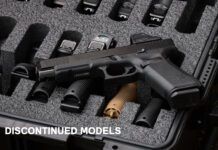

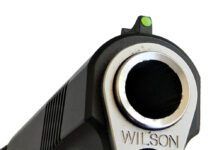






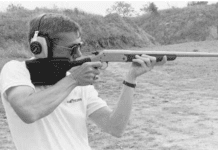







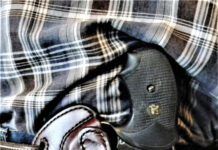

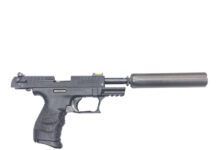



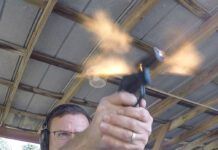

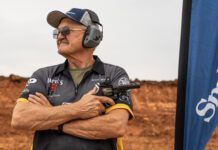

I love my SBH in 480. I mainly run 410 grain hardcast. A 44 and 45 both have those loadings? My SBH is light and compact and easy to carry. Recoil is easily manageable by me. To compare the 454 and 480. The 454 jars my grip loose every shot and I have to reset my grip. I can dump all 5 rounds of my 480 without resetting my grip at all. For hunting maybe the 454. For bear defense and hiking the 480 in SBH is easily the handier revolver. Does the 454 match that penetration level?